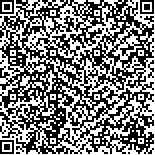下载中心
优秀审稿专家
优秀论文
相关链接
摘要

作物收获之前进行大范围作物生长状况评价 ,可以尽早的获得有关作物产量信息。介绍了中国农情遥感监测系统的综合作物长势监测方法。以遥感数据标准化处理、云标识、云污染去除和非耕地去除为基础 ,生成质量一致的遥感数据产品集 ,提取区域作物生长过程。作物长势监测分为实时作物长势监测和作物生长趋势分析。实时的作物长势监测可以定性和定量地在空间上分析作物生长状况 ,分级显示作物生长状况 ,分区域统计水田和旱地中不同长势占的比重。作物生长趋势分析可以进行年际间的生长过程对比 ,从时间轴上反映作物持续生长的差异性 ,统计全国、主产区、省和区划单元 4个尺度的耕地、水田、旱地作物生长过程曲线年际间差异 ,从而为早期的产量预测提供信息。通过处理流程的系统化 ,建设了运行化的作物长势遥感监测分析系统 ,为用户构建了综合的作物实时生长状况 ,苗情的生长趋势分析环境。同时可以依据野外地面实测信息对遥感监测结果进行标定和检验。 1998年以来 ,系统在满足日常运行的前提下 ,技术方法逐渐改进和完善 ,监测结果的精度和可靠性不断得到提高。
It is possible to evaluate the crop condition and yield status before the harvest for a large scale of area. This paper introduces an integrated method for crop condition together with water shortage monitoring with remote sensing during the crop season. Both NOAA AVHRR and SPOT VGT data are used. VGT data can be used directly since it has been calibrated and corrected before being delivered to the users. AVHRR data are not lucky enough, it need to process on radiance calibration, atmospheric correction,and cloud masking, which generates a consistency AVHRR dataset for the whole China territory since 1991. The non-arable land is masked too in order to highlight the crop information on the arable land. The land use map at a scale of 1:100 000 is used. There are two ways to monitor the crop condition. The differential image of 10 day composite NDVI images in current decade and the same decade in previous year is used to monitor the current crop conditions. The differential image is divided into five categories and assigned with red, yellow, green, cyan and blue to indicate the conditions. Crop condition figures at provincial level are calculated for paddy field and upland area. The result allows users to quickly assess where the crop conditions have been deteriorated, remained or improved. Except for the differential image, the time series of NDVI during the crop season at different scale, such as nation-wide, main production region, province, county, and at different types of paddy field and upland, are used to evaluate the trend of crop condition and compared with the same profile at previous year. The profile also shows the information of crop yield if you look at the peak value, increase or decrease rate, and pattern of curve. A GIS is developed to integrate crop condition information and provide an environment of analysis and evaluation. The GIS can automatically generate the differential image and draw time series of NDVI by retrieving the data from existing database. The ground survey data are integrated into the GIS to review the real situation at field and validate the monitoring results. The meteorological data, like temperature, rainfall, and sunshine duration are integrated too to provide the background information for the analysis. The methods are used to monitor the crop condition over the China since 1998. During the crop season, the bulletin of crop condition are generated every 10 days from later March to Later October. These information are invaluable to decision makers and analysts within government bodies for better management of agricultural production and grain administration. In 1998, China suffered serious flood problem, but the damage to the crop was only limited to narrow areas along the rivers, and the damage were compensated by remote area where had good water supply.

